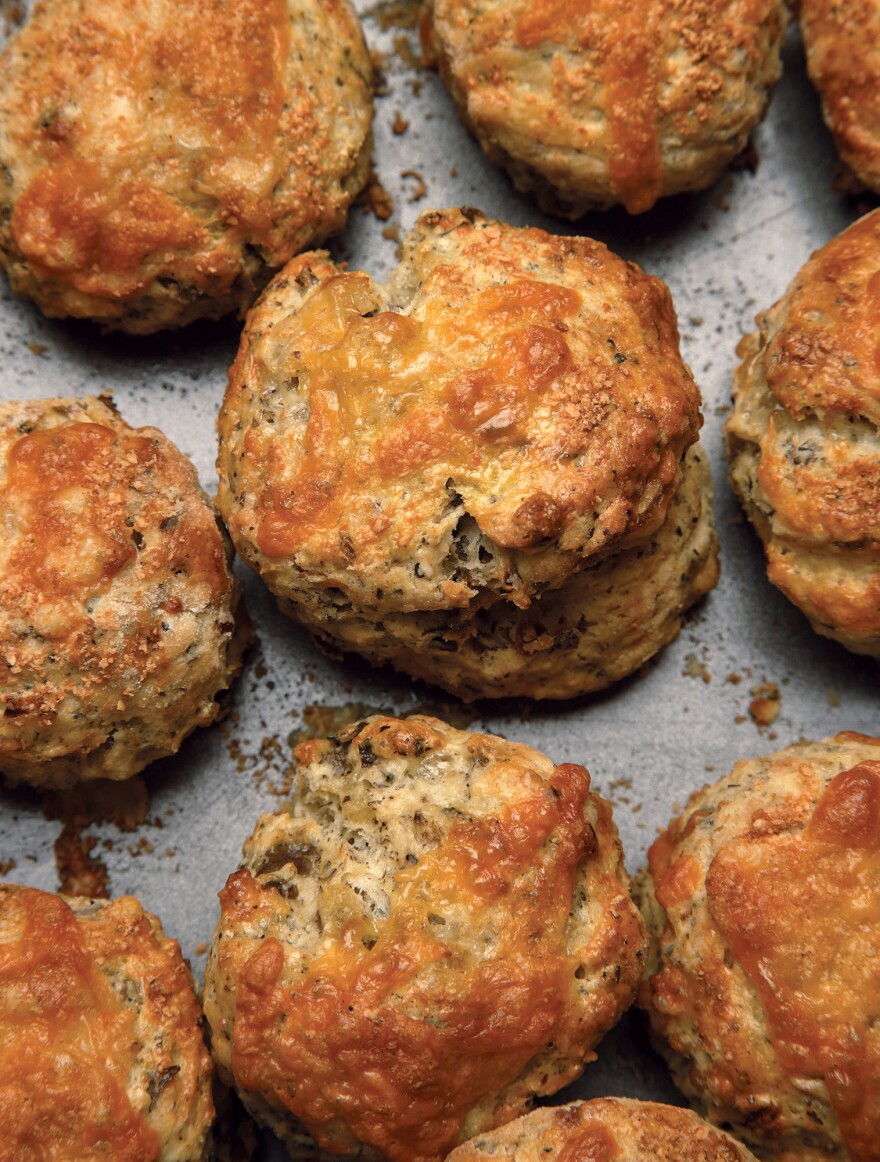Speak of the Emerald Isle, and you picture verdant rolling hillsides. But there's another green bounty — not just on Ireland's soil, but off its coast. We're talking about seaweed. And if some Irish have their way, it'll be making its way back onto plates.
OK, OK. We couldn't resist, but yes, not all seaweed is green. The algae (yep, it's algae) is divided into red, green and brown varieties — all of which grow in Irish waters. As is perhaps unsurprising in a land with such a high craggy-coastline-to-country ratio, the Irish have a long history of eating seaweed. The reddish-brown fronds of dulse (Palmaria palmata), also known as dillisk or duileasg, were a nutrient-rich supplement for early diets, and Irish moss (Chondrus crispus), or carrageenan, thickened milk into pudding. But the practice gradually declined.

Seaweed was eaten to keep alive during the Great Famine of the mid-1800s, and for many in Ireland, it never quite shook this association as a vestige of an older, poorer time. It's sold as a snack food at the centuries-old Ould Lammas Faire in Northern Ireland, but as something of a quaint tie-in to the festival's past (much like Renaissance Fair-only al fresco turkey legs). More often than not, seaweed was harvested not to be eaten itself, but to fertilize the fields to better grow other crops.
But in Ireland — as in many places — people are looking to change that. Prannie Rhatigan of Streedagh, County Sligo, first started teaching about seaweed in the 1990s. "When I would ask participants what seaweeds they knew of or had eaten, most looked at me blankly. A few people volunteered dulse or Irish moss," Rhatigan remembers. "Now when I give courses, everyone has eaten a wide range."
Irish seaweeds face some of the issues common to foraged wild foods — dealing with less-than-convenient growing and harvesting (and, in this case, tide patterns), and navigating the legality. But for those who do harvest, the yield can be delicious.
Yes, there are briny notes that can be a bit intense. But many seaweeds don't just have "fishy" notes, but rather a depth of umami flavor. In fact, the very term "umami" was initially developed to describe the glutamic acid isolated from seaweed — known as MSG. And for those not quite up for a sleabhac smoothie, using seaweed as a condiment-like accent might be a bit of a gateway.
"The old favorite dillisk, well known in North America as dulse, with its distinctive spicy flavor and mouth-feel, is roasted in the oven for crisps, flaked into salads, mixed into homemade mayonnaise or whizzed into sauces and pestos," advises Rhatigan, who collected and developed such recipes for her cookbook The Irish Seaweed Kitchen.
Rhatigan grew up with seaweed-spiked meals, and as a physician she is especially keen on seaweed's health profile. But her evangelism isn't just about the minerals and protein – she's taken with the flavor that's waiting right off the shore, which can be used to spike butter, or toasted up into the maritime equivalent of a kale chip. Because on St. Patrick's Day, why should your Shamrock Shake be the only thing that's green?

Duileasc (Dulse) And Cheese Scones
Prannie Rhatigan adapted this recipe from her mother, Shelagh.
Makes 20-22 small scones
Ingredients:
Olive oil, for frying
2 onions, chopped very finely
2 garlic cloves, minced
1½ oz dulse, toasted and crumbled into flakes or purchase flaked. (If you're in the United States, Rhatigan recommends Maine Coast Sea Vegetables)
3 cups of all-purpose flour
1 tablespoon of baking powder
2 level teaspoons of mustard powder
¼-½ teaspoon of cayenne pepper
6 tablespoons of butter, softened
1 cup of milk
1 egg, beaten
3 ounces of strong sheep or goat cheese or a strong cheddar, grated
1 ounce of strong cheddar, grated, or a smoked cheese, or Parmesan, for sprinkling
Method:
Preheat the oven to 410°F. Lightly grease one large baking tray.
Heat a bit of oil in a pan over a medium heat, add the onions and garlic and fry gently over moderate heat for a few minutes until softened and transparent. Add the crumbled dulse toward the end and mix gently to combine. Set aside to cool.
Sift the flour and baking powder into a mixing bowl. Stir in the mustard and cayenne pepper. Dice and rub in the butter with your fingertips until the mixture resembles fine breadcrumbs. Make a well and pour in the milk and egg, reserving a little. Mix gently to combine. Stir in the cheese, and the cooled onion and dulse mixture.
Turn the dough onto a floured surface and flatten by hand or with a rolling pin, to a thickness of just over 1 inch.
Using a 1½-inch round diameter cutter, stamp out scones and place on the baking trays. These scones are very small in diameter, but very high.
Brush with the reserved milk and egg mixture and sprinkle cheese on top.
Bake in the oven for 12 minutes until golden. Remove and cool slightly on a wire rack. Best served warm with butter.
Cook's Tip: To avoid re-rolling the dough, shape it into a square. Brush with reserved milk and egg mixture and sprinkle cheese on top. Using a large cleaver or knife, cut the dough into 1-inch lengths across and then down, making a grid of scones, each about 1-inch square. Transfer the scones to the baking tray to bake as above.
Copyright 2021 NPR. To see more, visit https://www.npr.org.



